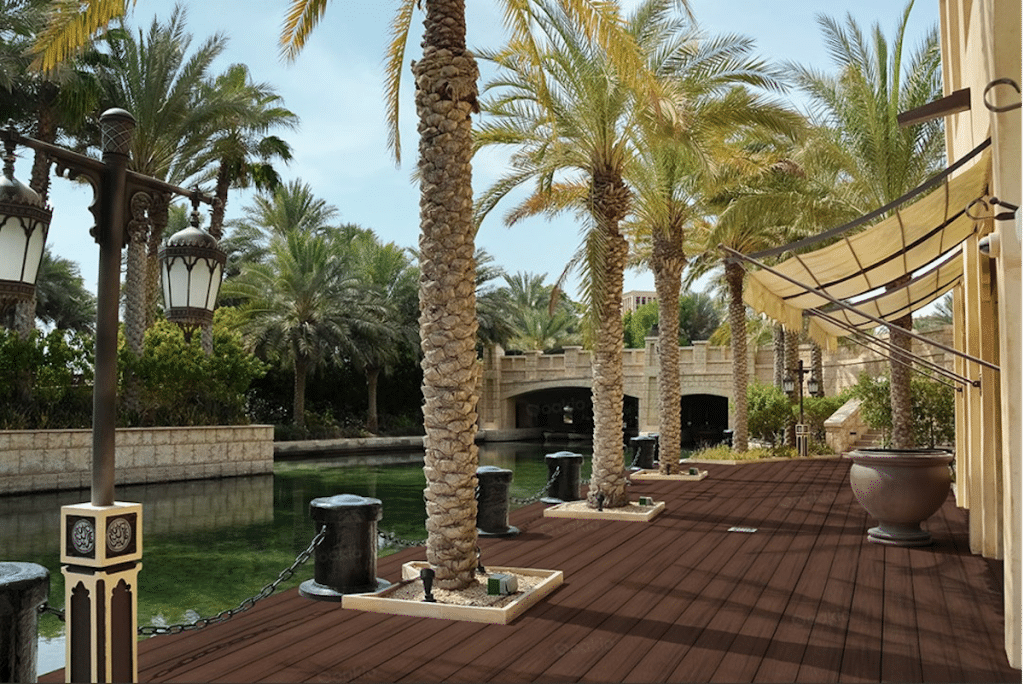When it comes to outdoor design, traditional wood decking has long been the go-to choice. But have you ever wondered if there’s a better, more sustainable option? That’s where composite decking comes in.
In this article, I’ll explore why composite decking is quickly becoming the future of outdoor spaces. From its durability to low maintenance, you’ll discover how this innovative material changes the game for homeowners and designers alike. So, if you’re considering a deck upgrade or a new build, keep reading to find out why composite decking might be the perfect solution.
Composite Decking as a Sustainable Modern Choice
Composite decking stands out as an eco-friendly option in outdoor design. Made from recycled materials like plastic and wood fibers, it reduces the need to cut down trees. I swapped my old wooden deck for composite and immediately noticed a reduction in maintenance needs, saving me both time and money. These decks resist mold and stains, further extending their lifespan.
Key Advantages:
- Durability: Withstanding harsh weather without rotting or warping.
- Low Maintenance: Requires minimal cleaning compared to wood.
- Eco-Friendliness: Uses recycled materials, reducing environmental impact.
Key Benefits of Composite Decking
Composite decking offers numerous advantages over traditional wood decking, making it an excellent choice for modern outdoor spaces.
Sustainability
Composite decking uses recycled materials like plastic and wood fibers, reducing the need to cut down trees. This eco-friendly approach helps preserve forests while giving new life to what would otherwise be waste. My switch to composite decking significantly reduced maintenance needs and reinforced my commitment to sustainable living.
Durability and Weather Resistance
Composite decking withstands harsh weather without rotting or warping. It resists moisture, insects, and UV rays, which can degrade over time. During a heavy rainstorm, my composite deck showed no signs of wear or damage, proving its resilience.
Low Maintenance
Composite decking requires minimal upkeep. You won’t need to stain, seal, or treat it yearly. A simple soap-and-water wash keeps it looking new. The time and effort I previously spent on maintaining my old wooden deck are now a thing of the past, freeing up more time for relaxation.
Longevity
Composite decking has a longer lifespan than wood. Its robust construction ensures it lasts decades, maintaining a fresh appearance with little fading. Investing in composite decking means enjoying a beautiful, durable outdoor space for many years without the hassle of frequent replacements.
Environmental Impact and Resource Conservation
Composite decking champions resource conservation by using sustainable methods. It incorporates recycled materials, helping reduce environmental waste.
Recycled Content
Composite decking often uses recycled plastics and wood fibers, minimizing waste. For instance, I recently switched to composite decking made from 95% recycled content. This change repurposed resources and diverted materials from landfills, promoting sustainability.
Composite decking sources:
- Recycled plastic bottles
- Reclaimed wood fibers
- Industrial scraps
Reduced Chemical Usage
Unlike traditional wood decking, composite decking lowers the need for harmful chemicals. Wood decks often need stains, sealants, and pesticides. Composite decking resists pests and molds naturally, eliminating the regular use of these chemicals.
Traditional wood treatments:
- Stains for color and protection
- Sealants for waterproofing
- Pesticides to combat pests
Composite decking benefits the environment by reducing chemical treatments creating safer, toxin-free outdoor spaces. In my experience, the absence of these chemicals made maintaining my deck a breeze, just an occasional wash with soap and water.
The Future of Outdoor Design
Energy Efficiency in Manufacturing
Composite decking saves energy during production. Traditional wood decking involves logging, processing, and transportation, which consume significant power. In contrast, composite decking uses recycled materials, cutting down these energy-draining steps. Manufacturing processes require less energy since they combine plastic and wood fibers instead of refining raw timber. This efficiency reduces greenhouse gas emissions, which helps combat climate change.
Contributions to Sustainable Building Practices
Switching to composite decking supports sustainable building practices. It utilizes recycled content like plastic bottles and reclaimed wood, minimizing landfill waste. For instance, my choice of composite decking composed of 95% recycled material substantially lowered my household’s carbon footprint. Using composite materials reduces the need for chemical treatments in traditional wood decking, making outdoor spaces safer for families and pets. This practice promotes eco-friendly living and healthier environments.
Conclusion
Switching to composite decking transformed my outdoor space. I no longer worry about splinters or constant maintenance. Instead of yearly staining, a quick wash keeps it looking fresh. Plus, knowing it’s made from recycled materials makes it a feel-good choice. For anyone tired of wood deck upkeep, composite decking offers a practical, eco-friendly solution.
